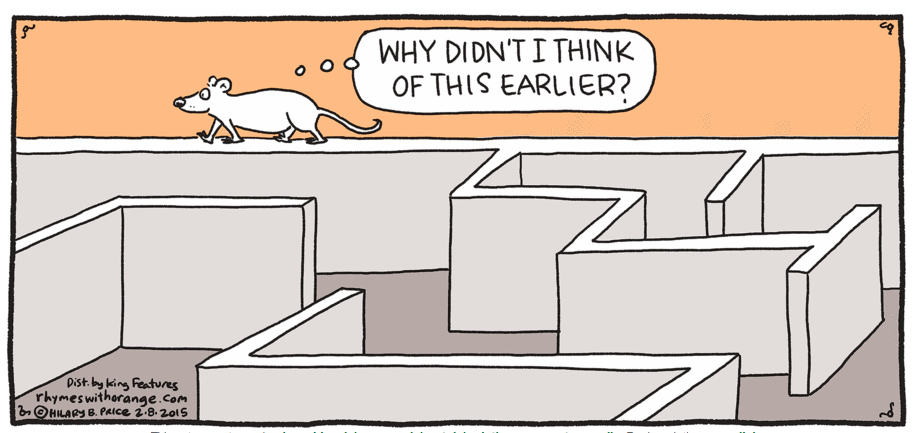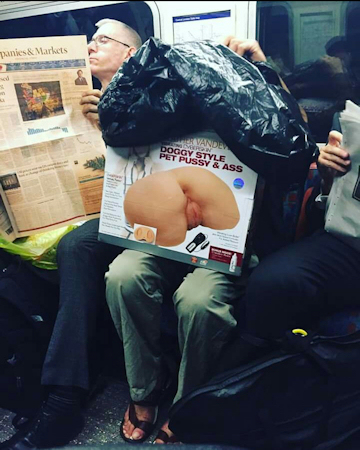
Something for the Weekend


This week we return to juvenile humour [which may be NSFW].
There’s a curious scroll of images from Edo period Japan (1603-1868) of he-gassen, or a “farting competition”. The images show men and women happily expelling their gasses at cats, horses and even at each other. Apparently no one is safe!

This week we enter the realms of pre-adolescent male humour — and the humour of wealthy and powerful medievals. We all know that every court had one or more jesters, and it seems that some of them included farting to order amongst their repertoire. Some were even able to fart tunes (indeed from memory there is a line somewhere in Chaucer about some character “playing upon the arse trumpet”).

Just a little reminder of what 2016 has in store for all of us …

There have been so many hilarious things in 2015 — even leaving our benighted politicians aside — that it’s hard to know where to start. So I’ll follow the scheme of the last couple of years.
 Product of the Year
Product of the Year
Two examples of Indian food tie for this year’s gold medal:
Chicken Tikka Yorkshire Pudding on the market care of frozen food chain Iceland.
Indian Lasagne. Marinated chicken tikka lasagne bound in a mild massala sauce served with garlic naan and hand cut chips. This delicacy appears on the menu of the Boar’s Head Hotel near Sudbury, Derbyshire.
Auction Item of the Year (from our local auction house)
This year’s three winners are:
Third: A large ouzo decanter in the form of a Greek gentleman in national dress
Second: A vintage rhinoceros foot worked as a plant pot, circa 1900, an old whale tooth and a section of mammoth tusk
First: A collection of antique oddments
[Yes, that really is what they catalogued as a lot!]
Name of the Year
One always comes across some excellent names, but I think this year’s winner has to be Satchidananda Panda, a biologist who was mentioned in Scientific American back in February.
Best Neologism
The prize here has to go to whoever perpetrated the reality-based community.
Best Oxymoron
We have two winners here:
Gluten-free beer
[I’m not at all sure that it’s beer if it isn’t brewed with grain containing gluten; certainly the Germans wouldn’t recognise it as such.]
Precisely simulate
[My heart sinks whenever I see some set of scientists supposedly proving something using a simulation, or as we experts like to call it “in silico analysis”.]
Best Book Title
As always there are many contenders, but for me pride of place has to go to:
Advanced Pavement Research: Selected, Peer Reviewed Papers from the 3rd International Conference on Concrete Pavements Design, Construction, and Rehabilitation, December 2-3, 2013, Shanghai, China, edited by Bo Tian
[I think what clinched it for me was the idea of pavement rehabilitation.]
The runners-up, but only by a short head were:
Diana Rajchel, Divorcing a Real Witch: For Pagans and the People That Used to Love Them
Kaz Cooke, Living with Crazy Buttocks
Best Academic Paper Title
There was only ever going to be one winner: Flaccid Mechanics: From Penis-Size Statistics to Penis-Size Physics
Best Folk Custom
The winner here is the Annual Ceremony of the Christmas Cheeses.
Most Unusual Sport
This award has to go to Elephant Polo [see below]
Outstanding News Headlines
I could have overfilled this category in the first month of 2015 so here is just a selection of the many, many contenders. If I had to pick a winner it would be between the first two.
Idaho lawmaker asks if women could swallow cameras for gynaecological exams before abortion; Boing Boing, 23 February 2015
Masturbation will make your hands pregnant in the afterlife, televangelist warns; Independent, 26 May 2015
Southall Man Jailed For Sex Assault on Bus; Ealing Today, 9 June 2015
Three jailed for garden fork murder; BBC, 24 July 2015
[I’m still trying to work out how you murder a garden fork, or rape a bus.]
Singing tampons follow dancing genitals on Swedish kids’ TV; Guardian, 14 October 2015
Old Mice Drinking Champagne Three Times A Week Navigate Labyrinths Better; IFLScience, 9 November 2015
[Don’t we all?]
EFG Switzerland wins Elephant Polo Championship; Kathmandu Post, 27 November 2015
Stockholm clinic hands out penis measuring tapes; Guardian, 30 November 2015
Stolen circumcision ambulance found after tip-off; Evening Standard, 3 December 2015
Best Photograph
This guy on the London Underground clearly doesn’t realise his shopping isn’t properly bagged.

Best Press Release
There is only one real contender here: National Hot Dog and Sausage Council Announces Official Policy On ‘Hot Dog as Sandwich’ Controversy
And finally we come to …
Do what?
Where we celebrate the intelligibly unintelligible. Again we have two winners:
Wordsworth seems to uphold affective mind transmuting partial objects into a sublime whole, but in actual poetry parts ARE wholes.
[Nick Birns on Twitter, 09 January 2015]
Aerial images of bombings translated into abstraction, along with notions of purity constructed then consumed by its own consumerist culture; very real things, which mutate into some hyper-real coded symbolism in the work of Ian Parker and Srinivas Surti. The beauty and elegance of the work belies the twisted, contorted and inverted translations taking place. These two artists are pushing the gooey mess of their source material, 20th century photographs including bombsites and male figures (for Parker), and retail branding architecture (for Surti), through multiple mesh filters, separating, folding, splicing and reconfiguring them to arrive at a sort of ‘new brutalist’ abstraction. What’s striking in this transformation is that modernist structure and process have been replaced by transcription and interpolation.
[Quoted by IanVisits @ Facebook; 10 January 2015]
Let me know your favourite amusements of the year — and don’t forget to start collecting for 2016!
A train on tracks, carved delicately out of graphite pencil lead, emerges from inside a carpenter’s pencil …

David Bader
One Hundred Great Books in Haiku
Viking, 2005
I was given this little book as a Christmas stocking filler. In his Foreword the author says:
In the fifteenth century, Gutenberg … revolutionized the world of publishing. Previously, books had been so scarce that it was not uncommon for a library to have only a handful of bound Latin manuscripts, chained to a desk. Beach reading … required furniture movers. After Gutenberg, millions of books … were published … This in turn led to eyestrain, paper cuts, deforestation and adult reading groups.
In Japan, meanwhile, the seventeen-syllable haiku began to emerge. Developed by Zen monks possibly suffering from attention deficit disorder, these poems were packed with keen insights on frogs and cherry blossom yet short enough to be recited in a single breath. Japanese readers could experience and savour the finest haiku of Basho in its entirety (three lines), while Western readers of, say, John Milton’s Paradise Lost (10,000 lines) were still staring at the title page.
This collection attempts to combine these two breakthroughs … The formal requirements of haiku … have, admittedly, made it necessary to cut some things, such as characters, plot, dialogue and descriptive passages. Still, these are small sacrifices in view of the huge savings in time and shelf space.
 This is indeed what the author has done — and done rather successfully — to produce an easy read version of his selected books. Although of course one won’t necessarily agree with his entire choice of “great books” (What no Anthony Powell? No Lewis Carroll?)
This is indeed what the author has done — and done rather successfully — to produce an easy read version of his selected books. Although of course one won’t necessarily agree with his entire choice of “great books” (What no Anthony Powell? No Lewis Carroll?)
The book is easy enough reading for those last 10 minutes in bed; in fact I read the whole book in bed in about 30 minutes. But it is something one will be able to dip into once in a while for light amusement. For instance here are three entries which caught my brain …
So just to finally get us in the Christmas party mood …

The winners of the first annual Comedy Wildlife Photography Awards have been announced.
And the winner was this wonderful image entitled “Rush Hour”.